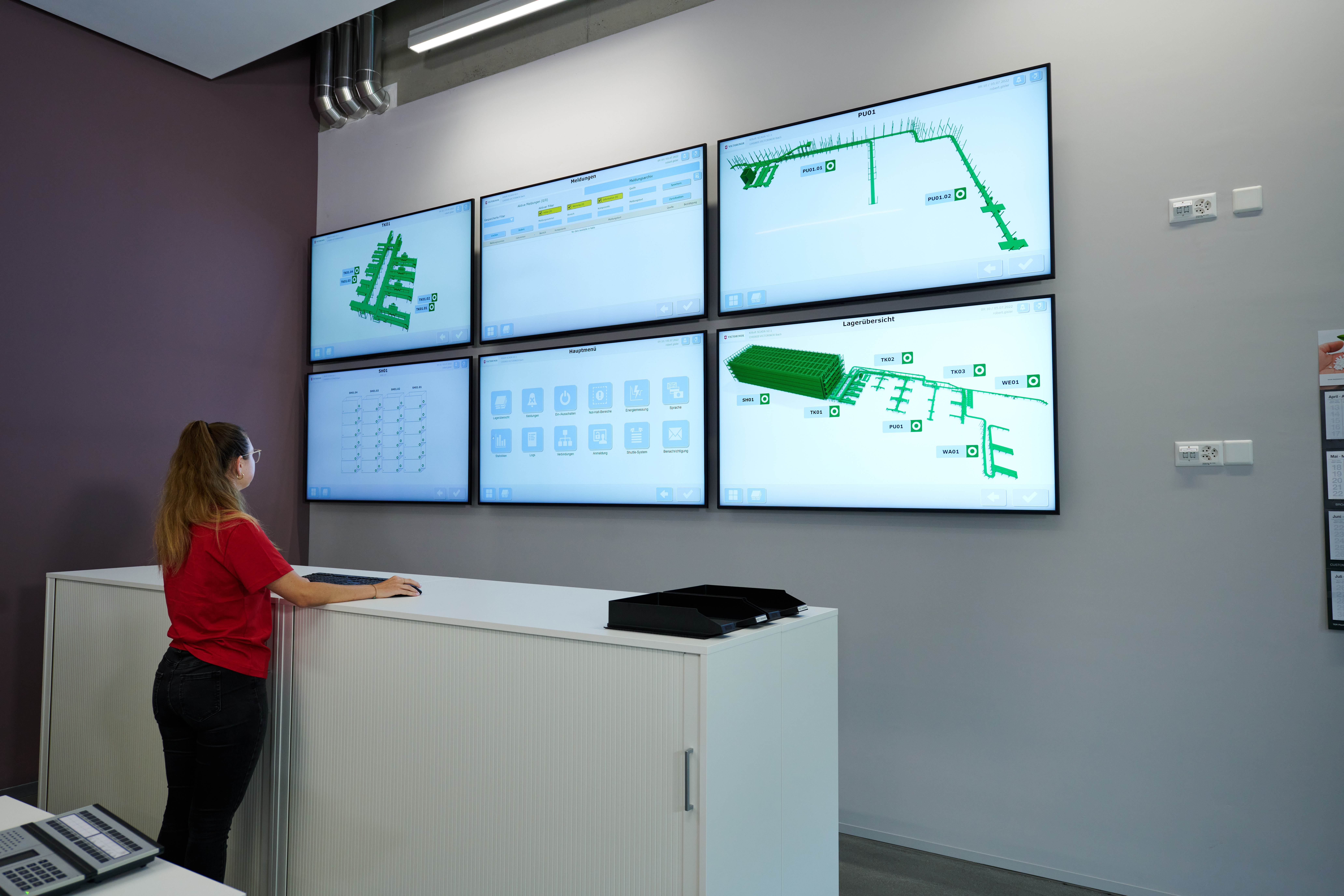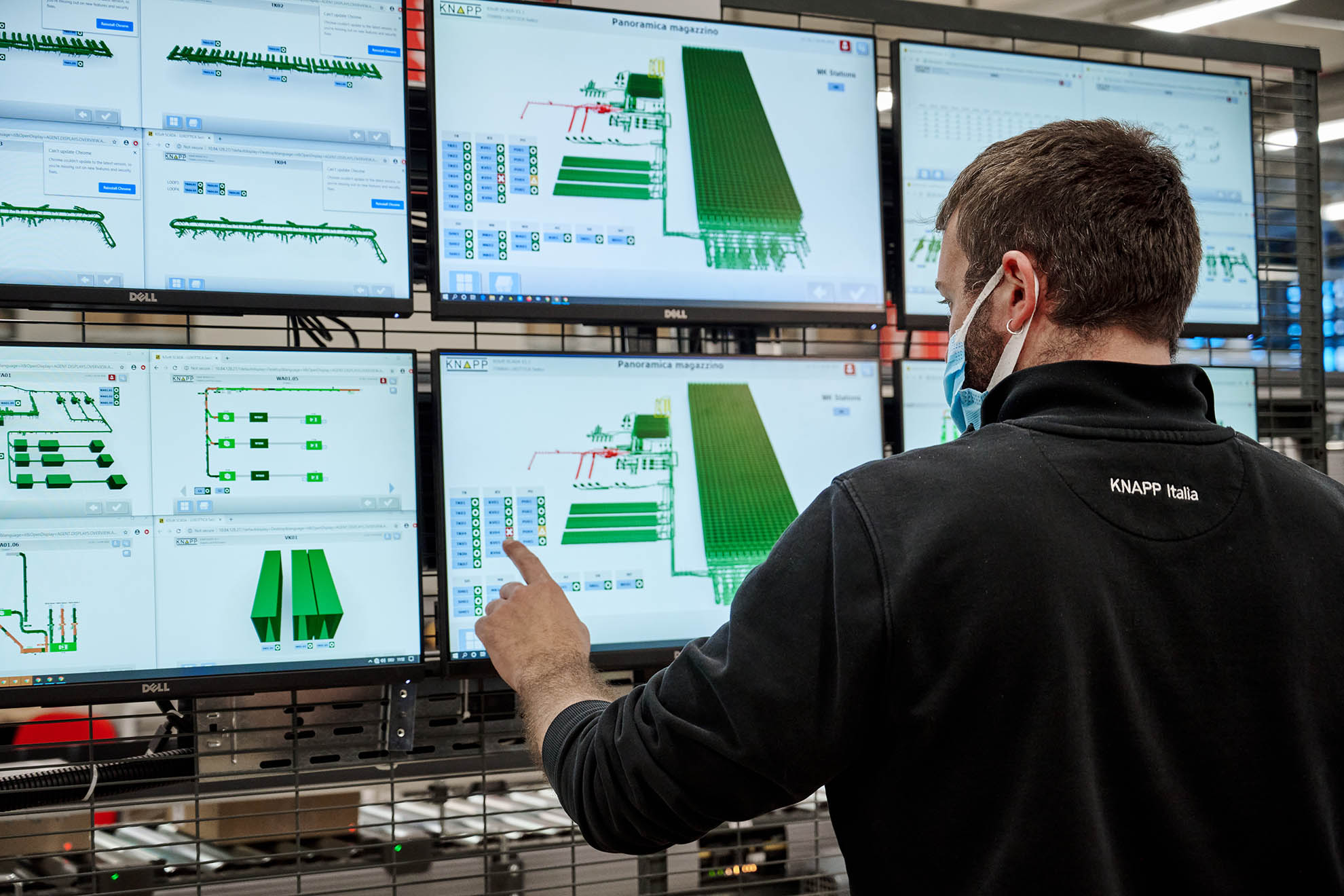Traditional software development is a well-established process. It’s commonplace that RFQs (requests for quote) and customer specifications define the requirements on the basis of which software is developed and tailored. But are there more ways to go about this? At KNAPP, we have found an answer.
What is solution design in logistics?
Automated warehouses contain an incredible number of different components and technologies, which have to be connected to the relevant warehouse processes in order to ensure that these processes deliver the performance required. However, processes and technologies also need to be controlled, orchestrated and monitored, while information flows have to provide the right data at the right time.
When we talk about designing logistics solutions, we mean creating an overview of the warehouse solution as a whole that keeps an eye on all components, technologies, processes and data flows. This overview goes beyond the warehouse itself, as the customer’s ultimate goal needs to be the focus of every decision. This is why software solutions should connect all components perfectly. Furthermore, they need to provide everything to meet the customer’s specific requirements since each customer system is unique and each customer has their own expectations and requirements.
Three new perspectives on software
Software is dynamic and agile. It can be changed, updated and optimized, both during development and after its completion. However, the way we think about software often prevents us from utilizing the opportunities there are for optimization. We are often stifled by the inertia of rigid processes, but if we take a new, fresh perspective on solution design, we can add extra value.
To exploit the full potential software holds in store, a new slant is needed on the following three stages of software design:
Let us present three projects we successfully completed using innovative approaches that generate added value for the customer’s entire solution.
Best practice: Solution design for KNAPP’s customers
Victorinox: Strong partnership through workshops
For a project to be successful, it takes more than just planning services according to the RFQ and specifications document. You need to get the big picture and understand the customer’s business as a whole, rather than just focus on the individual project requirements. For Victorinox, this meant that they first received a comprehensive catalog of questions from us in response to their RFQ. In the course of intensive workshops, we developed business cases and objectives together as a basis for determining the software processes later. Edgar Flecklin, Head of Logistics at Victorinox, remembers: “We anticipated a presentation but got a workshop. After a moment of astonishment, we were right in the middle of an in-depth process analysis. The result was a complete process map, which was straightforward to navigate. But what really mattered was that during this intense collaboration we built up a foundation of mutual trust.”
Victorinox opted for our intelligent, all-in-one KiSoft software as it combines warehouse management (WMS), control (WCS) and machine control systems into one complete vertically integrated program. The software made it possible to consolidate the processes from 17 warehouse locations in a single distribution center, which significantly facilitates operations and reduces costs.

EssilorLuxottica: “Software as a function” approach key to top performance in omnichannel fulfillment
When designing warehouse layouts, the focus has long been on the mechatronic components. Software comes in later to ensure that the components interplay harmoniously. But to further optimize these systems, you need interfaces that are compatible with each other.
Our approach to software is different: We don’t view software solutions as separate software products, but as a range of different functions – hence our comprehensive, all-in-one KiSoft software solution. Taking this viewpoint prevents interface issues and allows you to think in processes that can be improved as needed. Our customer EssilorLuxottica, a leading designer and manufacturer of exclusive luxury and sports eyewear and fashion, benefitted from this. Using software to consistently interlink processes, automation technologies and people from goods-in to goods-out allows them to ship 33,000 orders every single day, which corresponds to an incredible output of 200,000 items per shift.

The Very Group: Using tomorrow’s data today to maximize peak performance
Optimization usually starts with a look back: What worked well? Where is there room for improvement? And how can we use the results? From every project we successfully implement, we at KNAPP also learn and draw conclusions on what the best solution could look like for future customers.
System go-live also initiates the optimization phase, which is vital to ensuring the system is ready for peaks such as Black Friday. Using our intelligent KiSoft Analytics software, The Very Group – one of the largest online retailers in the UK – can ideally prepare themselves for what’s coming and take appropriate action to ensure that the installation runs smoothly during peak demand. This way, The Very Group is able to ship three times as many orders on Black Friday as on any other regular day.
KiSoft Analytics helps us make decisions. We are where we are today thanks to this tool.
Further reading recommendations


Automation and digitalization are incredibly important for logistics today. What are some common myths? What technologies create added value in warehouse operation? Flexible storage systems, smart picking robots and modern service apps – let’s discover the useful tools and lay the popular myths to rest.

Eliminate errors in goods-in and goods-out, exceed quality standards and increase employee satisfaction – but how? With our ivii.smartdesk, the state-of-the-art work station that received the Best Product of 2021 award at the LogiMAT.digital trade fair.
